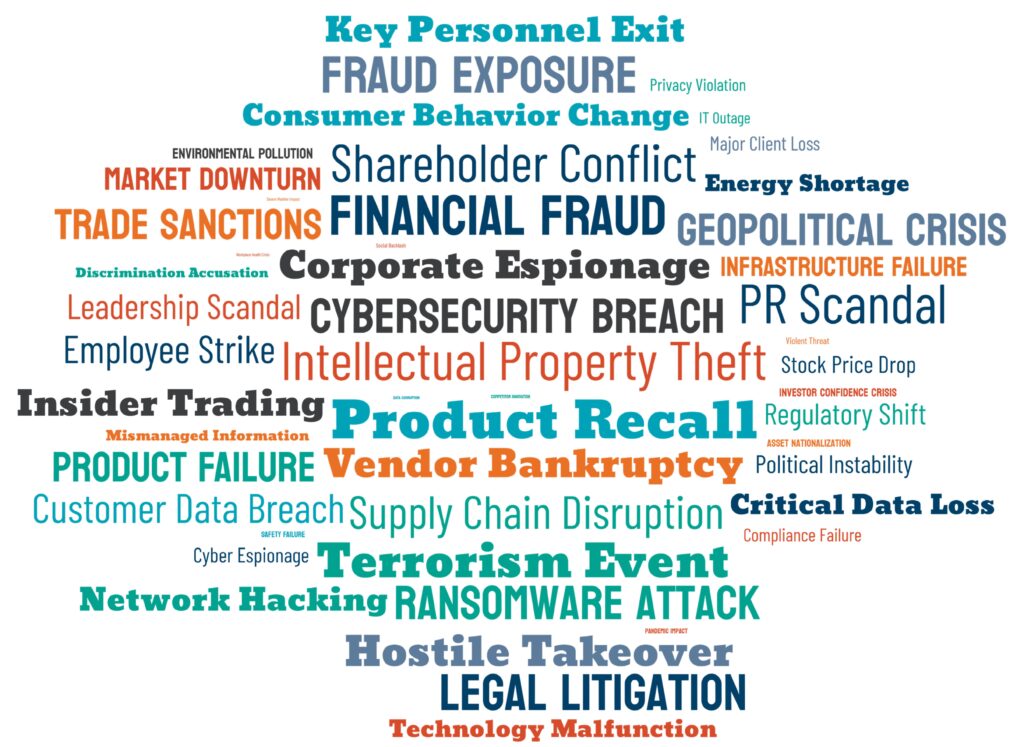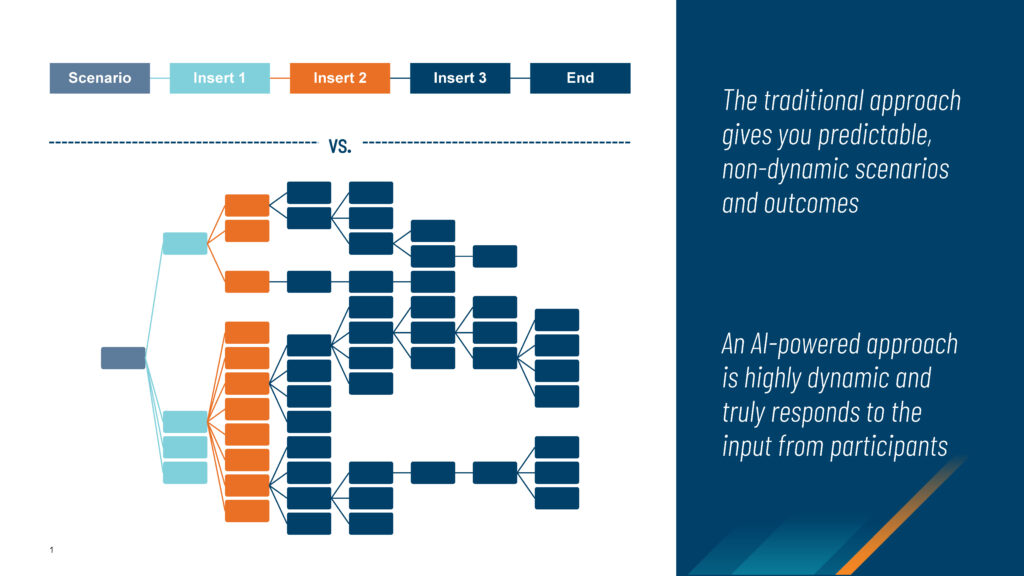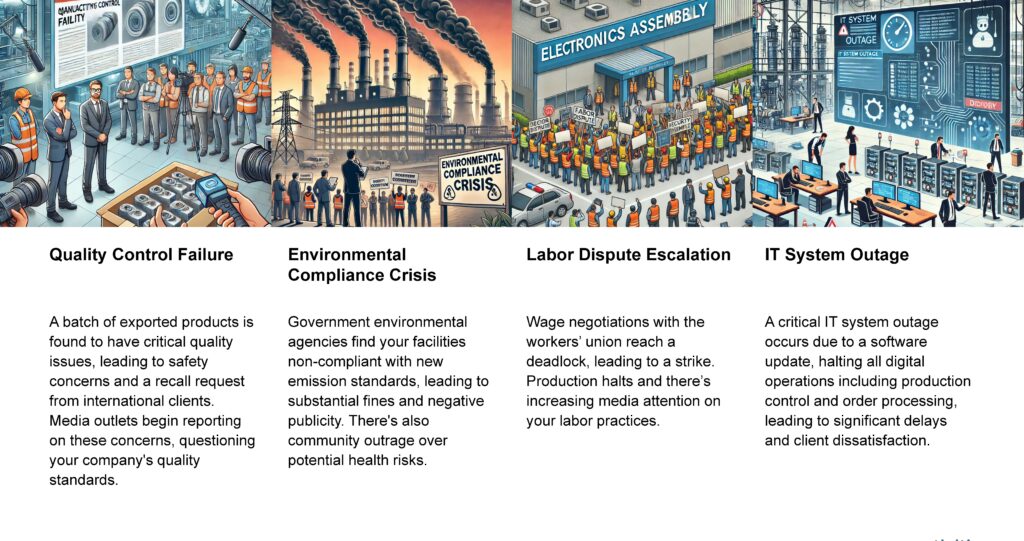What you need to know: In a world where unpredictability has become the norm, organizations are seeking innovative methods to ensure their teams are prepared for any crisis.
- Traditional training approaches fall short in simulating the complexity and unpredictability of real-world crises and are not tailored to the organization.
- This is where AI-powered crisis simulations come into play, offering a groundbreaking approach to crisis-simulation training.
By the numbers: Crisis planning and preparedness remains a significant challenge, even after the lessons learned during the global pandemic.
- In a survey conducted by DataCore Software, 54% of businesses reported experiencing a downtime incident in the past five years that lasted at least eight hours.
- According to research from Datto, hourly costs resulting from IT disruptions can reach as high as US$5million per hour.
AI-powered crisis simulations represent a leap forward in organizational preparedness and resilience building. These innovative training exercises prepare participants for real-world crises more effectively than traditional methods.
_______________
In a world where unpredictability has become the norm, organizations are constantly seeking innovative methods to ensure their teams are prepared for any crisis. Traditional training approaches fall short in simulating the complexity and unpredictability of real-world crises and are not tailored to the organization. This is precisely where AI-powered crisis simulations come into play, offering a groundbreaking approach to crisis-simulation training.
Make no mistake: Crisis planning and preparedness remains a significant challenge for many organizations, even after the lessons learned during the global pandemic. Issues can be particularly acute within the IT department. To illustrate, in a survey conducted by DataCore Software, 54% of businesses reported experiencing a downtime incident in the past five years that lasted at least eight hours. According to research from Datto, a global provider of security and cloud-based software solutions, hourly costs resulting from IT disruptions can reach as high as US$5million per hour.
Understanding the need for crisis simulation
Regular crisis-simulation exercises are crucial in building organizational resilience and meeting compliance requirements. They are instrumental for several reasons:
- Preparing for the unforeseen: Organizations must anticipate and effectively respond to emergencies to mitigate potential damage.
- Strengthening resilience: Simulations help organizations test and enhance critical response skills, thus fortifying the organization’s resilience.
- Creating awareness and education: Crisis-simulation exercises serve to educate employees about their roles during crises and increase their awareness of potential threats.
Limitations of traditional crisis simulations
Traditional crisis simulations often fall short for two reasons. Either they are too generic and not tailored to the organization, with off-the-shelf scenarios for a broad audience rather than a specific group, or they are highly customized and specific, often used as a one-off, and come at a high cost. This can lead to crisis simulations being conducted only at the management level and not at other levels within the organization.
The strength of AI-powered crisis simulations
AI-powered crisis simulations offer a solution to these limitations with unlimited scenarios (figure 1). By employing generative AI, these simulations create lively, tailored scenarios that evolve based on participants’ responses. Unlike traditional methods with predefined scenarios, AI-powered crisis simulations bring new developments as the scenario unfolds (figure 2). The attendees’ responses during the crisis simulation exercise immediately impact the scenario and further developments, which is less the case in traditional exercises. Attendees’ responses are fed back into the AI model in real time, enabling their actions to impact and determine the course of the crisis. This aspect of the simulations ensures that participants are not just passive learners but active players, whose decisions have tangible consequences. The scenarios mirror the unpredictability of real-world crises, providing a dynamic, engaging and highly realistic training environment.
Figure 1: Unlimited Scenarios
AI-powered crisis simulation exercises should be led by experts who encourage attendees to employ critical thinking and decision making and who can steer and correct the AI-model where needed. The AI model operates in the background and out of sight of the simulation participants, allowing the crisis simulations to be an engaging and tangible experience – not just an interaction with a tool. With expert guidance and interactive elements, the simulations offer strong engagement and improved learning outcomes.
Figure 2: Traditional (above the dotted line) vs AI-powered scenario generation
A unique and dynamic learning experience
AI-powered crisis simulations offer a unique experience due to their live-scenario generation capabilities. No two simulations are alike, as each is generated in real time based on decisions made by participants. This dynamic approach demands immediate reaction, creating a highly engaging and realistic training environment. A well-designed generative AI tool, ideally operating in a secure environment in which queries and outputs are not in shared public domains, can generate unlimited scenarios with AI, tailored to the participants. As an example, we generated the following possible scenarios and images, with specific relevance for organizations in the manufacturing and distribution industry group, using our organization’s private and secure generative AI technology:
Accessibility across organizational levels
Another advantage of AI-powered crisis simulations is their scalability and adaptability to different organizational levels, providing relevant training across various departments and positions.
- Operational staff: Focus on handling operational challenges and policy application.
- Managers: Tackle leadership, collaboration and policy effectiveness.
- Board members: Concentrate on strategic decision-making and organizationwide crisis management.
These simulations are not just testing tools but are instrumental in enhancing essential skills like problem-solving, decision-making, communication, leadership, emotional intelligence, stress management, ethical thinking, risk awareness and situational analysis.
AI-powered crisis simulations represent a significant leap forward in organizational preparedness and resilience building. These innovative training exercises prepare participants for real-world crises more effectively than traditional methods. By incorporating AI into crisis management training, organizations can significantly enhance their readiness, awareness and proactive approach to crisis management. This advancement not only prepares employees for potential crises but also instills a culture of resilience and readiness, crucial for navigating the complexities of the modern world.
Protiviti Managing Director Anneke Wieling also contributed to this article.









